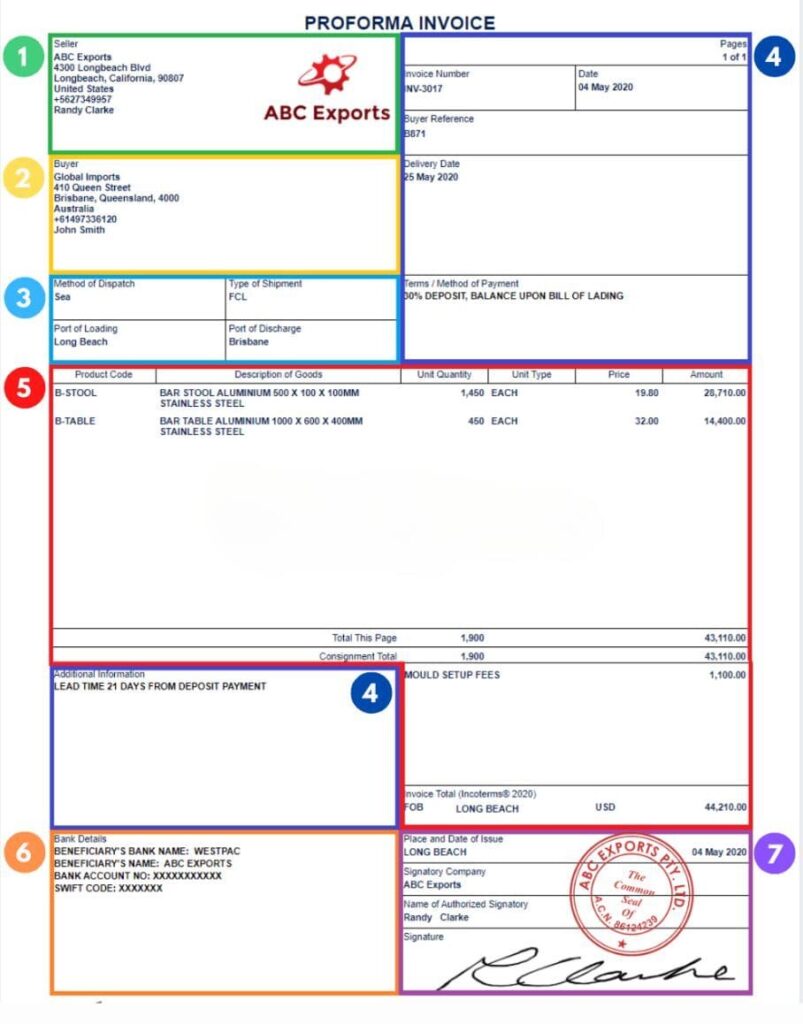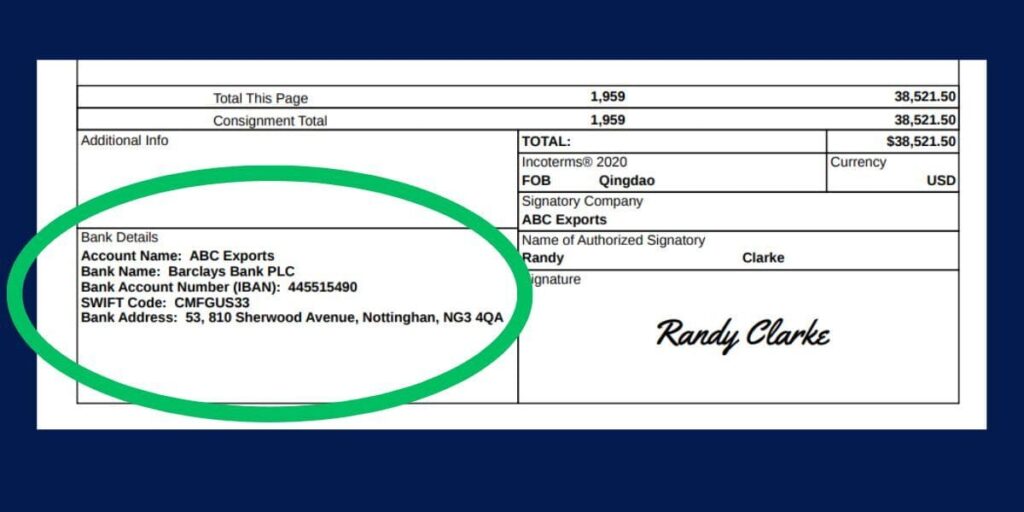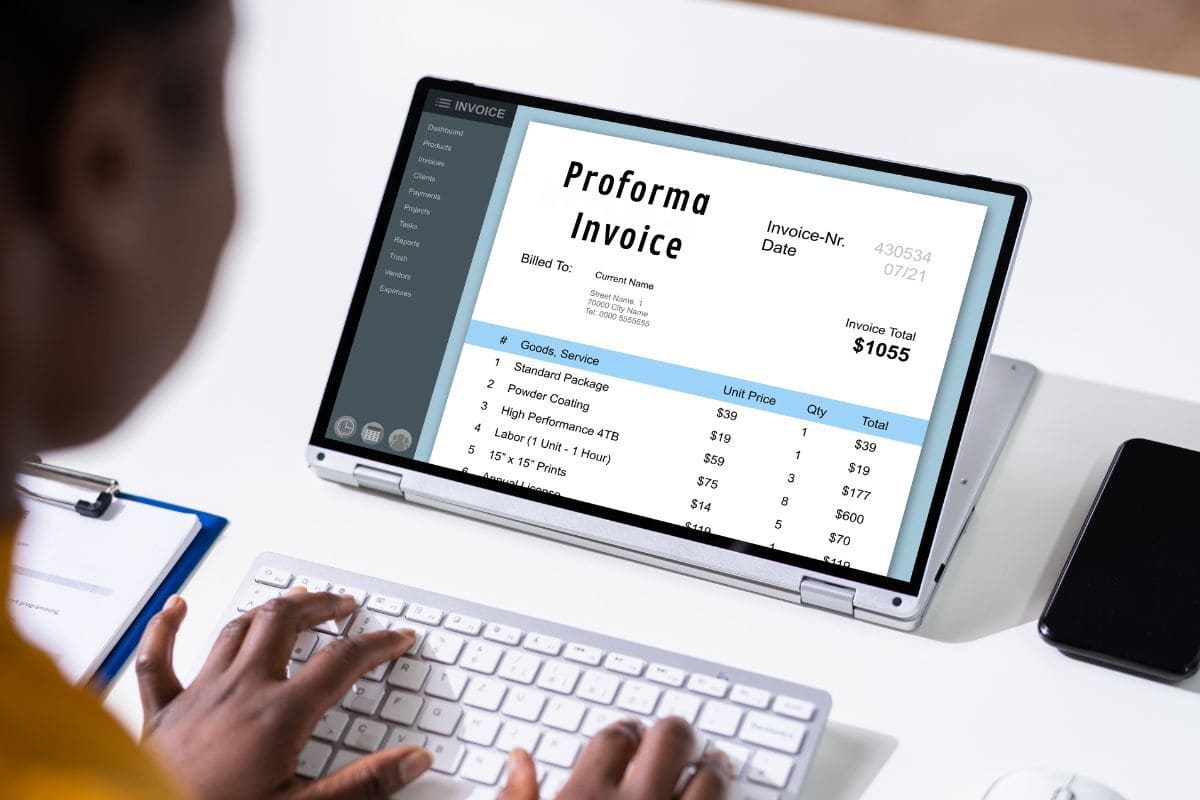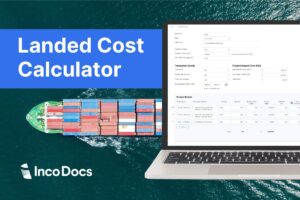What is a proforma invoice?
A proforma invoice is a preliminary bill that serves as a quote or estimate, given to the buyer before the delivery of products or services. It outlines the details of a transaction, including the total amount payable, agreed-upon deliverables and other details such as the delivery timeline. This type of invoice helps both the buyer and the seller clearly understand their expectations and responsibilities in advance.
Is a proforma invoice a legally binding document?
A proforma invoice is not legally binding. It acts as a preliminary estimate or proposal, showing what the seller intends to supply and at what cost, but holds no legal authority to demand payment. Although not a final sales document, it helps the sales process by setting clear expectations and facilitating negotiation.
The completion of the sale is confirmed only with the issuance of a formal invoice, also known as the commercial invoice, which is legally binding.
When should you send a proforma invoice?
A proforma invoice should be sent early in the sales process, particularly in international dealings, to give buyers a detailed and precise overview of the costs and specifics of the goods or services. This is crucial for buyers who require financing or need to obtain approvals before completing a purchase. Additionally, proforma invoices are commonly used to facilitate advance payments and deposits on international orders, which are often required before production starts.
Why should you use the proforma invoice?
Using a proforma invoice provides clarity and builds trust by detailing exactly what the buyer will receive and the associated costs, which is crucial in preventing misunderstandings, especially in international transactions or with new customers.
The use of a proforma invoice significantly accelerates decision-making, addresses potential issues at an early stage, and enhances the overall efficiency of the transaction. This makes it particularly effective for securing large orders or managing transactions with overseas clients, where clarity and precision are paramount.
Proforma invoices in tax and VAT assessment
Proforma invoices provide an early estimate of the potential taxes and VAT that may be applied to a transaction, allowing buyers to anticipate the total cost, including taxes, before committing to a purchase.
Although useful for preliminary financial planning, proforma invoices cannot be used for official tax claims or VAT reclaims as they are not final sale documents. They simply offer a preview of the tax implications, helping buyers understand and budget for the additional financial burdens a transaction may entail.
Proforma invoice example

Consider a scenario where you’re importing custom furniture from China. The seller provides you with a proforma invoice detailing the types of furniture, their production costs, and the estimated shipping date. This document also specifies an expiration date for the quoted prices to remain valid. By receiving this proforma invoice, you gain a comprehensive understanding of the financial and logistical aspects of your purchase. This clarity in costs and timelines facilitates effective planning and budgeting, ensuring you know exactly what to expect, which minimizes the potential for misunderstandings and ensures a smooth transaction process.
Download our Proforma Invoice Template
How does a commercial invoice differ from a proforma Invoice?
While both documents serve similar purposes in the documentation of transactions, a notable difference lies in the quantity of goods listed. The quantity specified on a proforma invoice often varies from the actual quantity shipped, which is detailed in the commercial invoice. Such discrepancies are typical in global trade.
These differences in shipped quantities can arise for several reasons. Most frequently, they occur due to manufacturing issues where suppliers may fail to produce the expected quantity. Additionally, logistical oversights such as miscalculations in the capacity of shipping containers can also lead to such discrepancies.
Once the goods are shipped, a comprehensive set of shipping documents becomes essential for buyers, freight forwarders, and customs authorities to facilitate the clearance of goods into the importing country. To address this, sellers provide a set of documents including the Bill of Lading, which serves as proof of shipment, along with the Commercial Invoice, Packing List, and any other necessary documents. This set of documents ensures that all parties have the detailed information required for the smooth processing of the shipment.
Read more about the difference between a Commercial Invoica and a Proforma Invoice.
When is a proforma invoice issued?
A proforma invoice is issued before the completion of a sale, usually when the buyer requests a quote or an estimate for the goods or services they are interested in purchasing. It is particularly common in international trade, where buyers need to know the costs, including shipping and taxes, for budgeting and customs purposes. This invoice provides a detailed preview of the transaction, helping the buyer make informed decisions.
It’s also used when the exact pricing cannot be determined ahead of time due to variable costs like international shipping rates or applicable taxes. By issuing this invoice, the seller can give a provisional document that outlines the expected transaction details, helping both parties to agree on the terms before the final invoice is issued and the goods or services are delivered.
Disadvantages of proforma Invoices
One significant disadvantage of proforma invoices is that they do not have any legal weight. This means they cannot be used as legal documents for accounting purposes or to enforce payment. For businesses, this can be a limitation, especially when dealing with new customers who may not understand that a proforma invoice is not a final demand for payment.
Another issue is that the details on a proforma invoice, including prices and delivery dates, are subject to change. This can lead to misunderstandings or disputes between the buyer and the seller if the final invoice significantly differs from the initial proforma invoice. It requires clear communication and understanding from both parties to ensure that the proforma invoice serves its intended purpose without causing confusion.
Advantages of the proforma Invoice
Proforma invoices offer clear benefits in terms of transparency and preparation for both the buyer and the seller. They provide a committed buyer with an accurate indication of the costs involved in a transaction, which is particularly useful for budgeting and planning purposes.
Furthermore, these invoices streamline the sales process by facilitating discussions on payment terms, delivery dates, and other transaction specifics in advance. This proactive approach can help in building trust between trading partners, especially in international transactions where clarity and accuracy are paramount.
By outlining the expected costs and terms, a proforma invoice also assists businesses in managing their cash flow more effectively, ensuring they are prepared for the financial commitments of the transaction.
How to pay a proforma invoice

A proforma invoice can be paid similarly to a standard invoice, typically with the accepted payment methods listed at the bottom of the document. Since proforma invoices are often used for deposit payments on international transactions, you can usually find the supplier’s bank details included for easy reference. Payment is commonly made via telegraphic transfer, a reliable method for international funds transfer.







